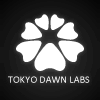2.0.0 Major update
# Added VST3 support
# Added compatiblity for macOS Catalina
# Added 100%, 125% and 150% UI scale options.
# Added advanced mixed phase modes for stereo width and balance filters.
# Added "SumDiff" stereo mode offering operation similar to traditional M/S EQing.
# Added "Mono" and exclusive channel modes "Sum", "Diff", "Left", Right".
# Added ECO and LIVE (zero latency) processing modes.
# Replaced LF and HF nonlinearity options with LF and HF exciters (legacy mode still accessible and recallable).
# Added Smart Operations panel (incl. control over stereo width and panning).
# Added source selector for the analyser: Off, Input, Output.
# Added options for Stereo Analysis (stereo width and balance vs frequency).
# EQ autogain no longer affected by HP or LP (projects recall as before, though).
# Analyzer precision and reaction time improved.
# UI performance improved.
# Fixed bug in stereo width loudness correction (old projects recall as before, though).
# Several little improvements.
Happy days, some nice improvements.
Just one little request though - would it be possible to move the smart ops panel to the right hand side of the GUI? When the VST resizes to accomodate the panel, everything kind of jumps to the right, rather than the panel gracefully appearing on the other side. Probably more work than you need right now (*cough Catalina), but would appreciate it if you could put it on the to-do-some-day list.
Thanks Fabien and team, nice release





